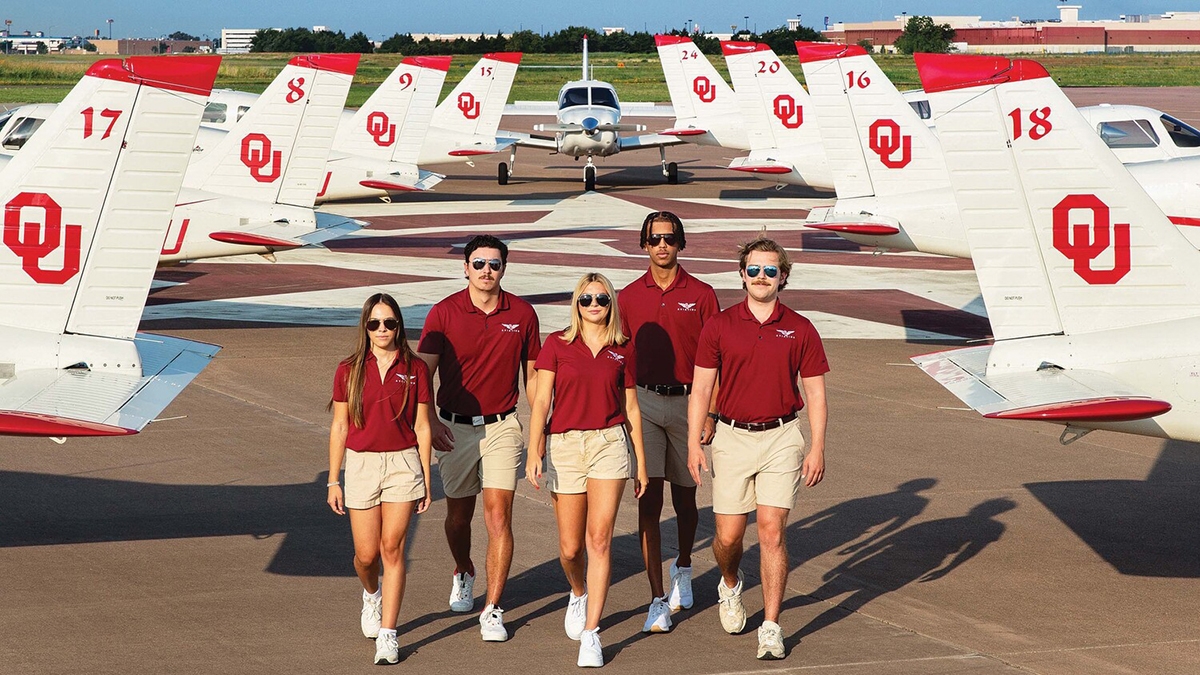
NORMAN, OKLA. – Often overlooked as a ‘fly-over’ state, Oklahoma is, in fact, a national leader in aviation and aerospace innovation, driven by the University of Oklahoma’s cutting-edge research and strategic industry partnerships. Thanks to cutting-edge academic research, robust workforce development and strategic technological investment, Oklahoma is at the forefront of innovation and growth in the industries that literally soar above it.
Researchers and leaders from several key areas of the University of Oklahoma are leading the charge in these endeavors. The School of Aviation, which has been recognized nationally for its pilot and air traffic controller training, has developed several partnerships with leading national aviation companies; the Data Institute for Societal Challenges creates innovative advances in data science, artificial intelligence, machine learning and real-world applications; and the Advanced Radar Research Center develops cutting-edge fielded radar technology for scientific discovery, defense applications, and many other commercials needs. Alongside the Gallogly College of Engineering, these schools, centers and institutes enhance the nation’s aviation, aerospace and defense capabilities and solidify Oklahoma as an academic leader and partner.
According to U. S. Congressman Tom Cole, “Oklahoma is uniquely positioned, not only by being close to really important military installations, but honestly by having a culture at the university that celebrates working on areas related to the defense of the United States of America.”
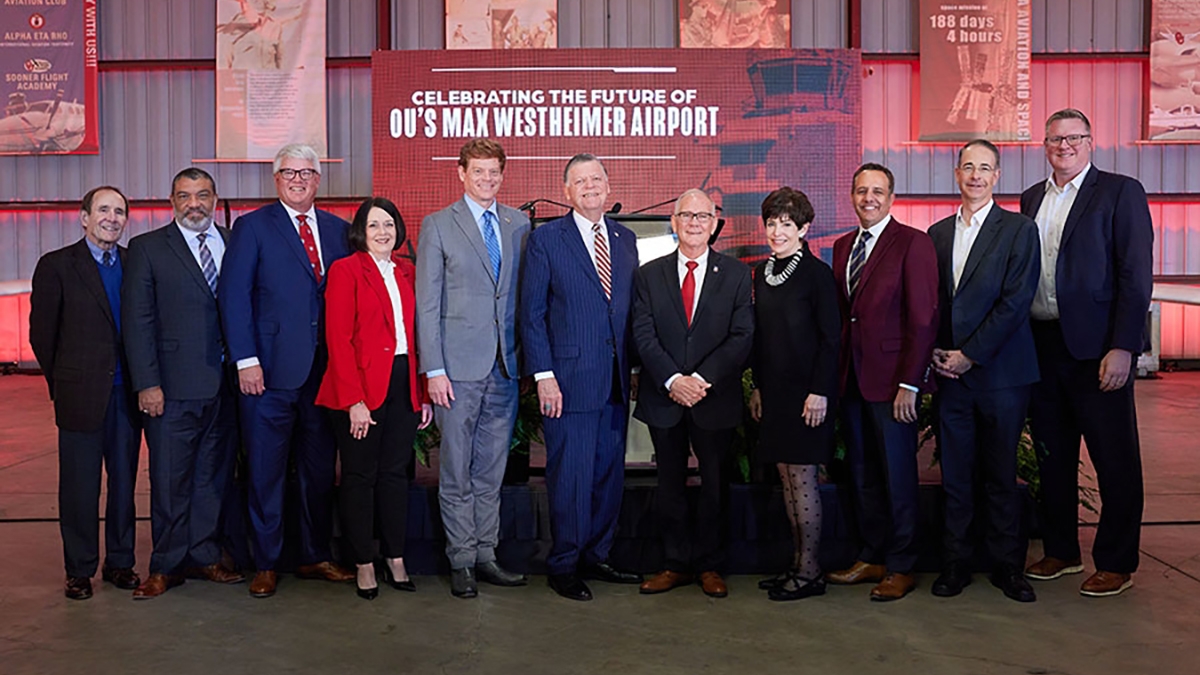
Building a Legacy in Aviation
The University of Oklahoma houses the nation’s top-ranked four-year degree aviation program. Founded in 1947, this program offers five areas of academic concentration, including the only helicopter program in the Southeastern Conference.
“If you look at Oklahoma specifically, aviation is the state’s second-largest industry and will probably be its biggest industry in the next few years,” said Eric Wydra, director of the OU School of Aviation. “You have a perfect storm of demand for our degrees in a state that is very aviation-friendly.”
Thanks to a $36.5 million federal appropriation and private donations, the university’s Max Westheimer Airport will soon add 90 hangers, state-of-the-art classrooms, labs and office space for a multifunctional OU Center of Aviation Excellence. Renovation on the Norman campus has also deployed flight simulators that enhance the hands-on learning experiences of the School of Aviation’s Air Traffic Management and Aviation Management programs.
With air traffic control jobs in high demand, the university has also launched the Enhanced Air Traffic—Collegiate Training Initiative (AT-CTI) program that allows qualified OU graduates to proceed directly to ATC facility on-the-job training, bypassing the FAA Academy. This program is currently the only four-year Bachelor of Science degree program in the nation.
“Being recognized as No. 1 in the country has brought a lot of attention to the School of Aviation and increased our recruiting power,” said Steve West, director of the school’s Air Traffic Management program. “Aviation is growing leaps and bounds, and I credit OU’s administration for realizing that. They’re all in. We’re all in.”
Furthermore, by partnering with United Aviate, United Airlines’ pilot career development program, OU students receive a conditional job offer for a First Officer role with the airline. They also receive mentorship from United pilots and develop a deeper connection with the United team.
“We are delighted to welcome the University of Oklahoma to the United Aviate program as part of our larger pilot development strategy,” said Michael Bonner, managing director of Aviate and pilot hiring at United. “With a strong record of preparing leaders in the aviation industry, we are proud to help current and future OU students continue their journeys to becoming professional pilots.”
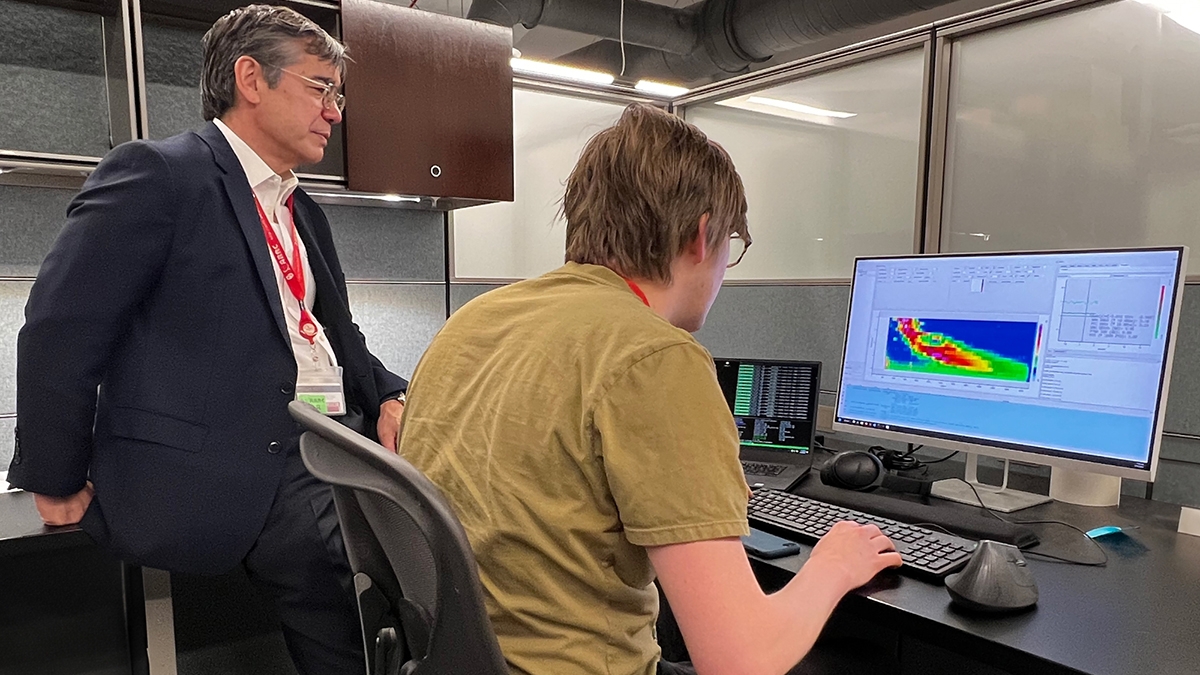
Deploying Technical Expertise
The university’s Advanced Radar Research Center is the largest academic radar program in the nation and is currently conducting research to increase the transmitted long-distance power density of phased array radar systems and enhance the use of directed energy systems for the U.S. Department of Defense’s counter-UAS mission.
“I am proud of all the work that is being done in Oklahoma to increase our capability to counter the growing threat posed by unmanned aerial systems. I have seen firsthand the advancements OU and its Advanced Radar Research Center have made in developing new radar technologies for commercial use as well as for use by our warfighters,” said U.S. Senator Markwayne Mullin.
OU has also established several projects that deploy artificial intelligence, machine learning and advanced computer science technologies to support Oklahoma’s aerospace industry. The Gallogly College of Engineering also uses AI/ML to improve autonomous routing of aircraft being operated by the U.S. Air Force.
“This automated routing capability will be able to quickly ingest information and output a near-optimal route based on the objectives of its human operators,” said Dean Hougen, an associate professor in the School of Computer Science. “Our prototype uses machine learning, demonstrated on publicly available Automatic Dependent Surveillance-Broadcast data and simulated data provided by the USAF, to develop routes that are autonomous, efficient, and understandable by human operators.”
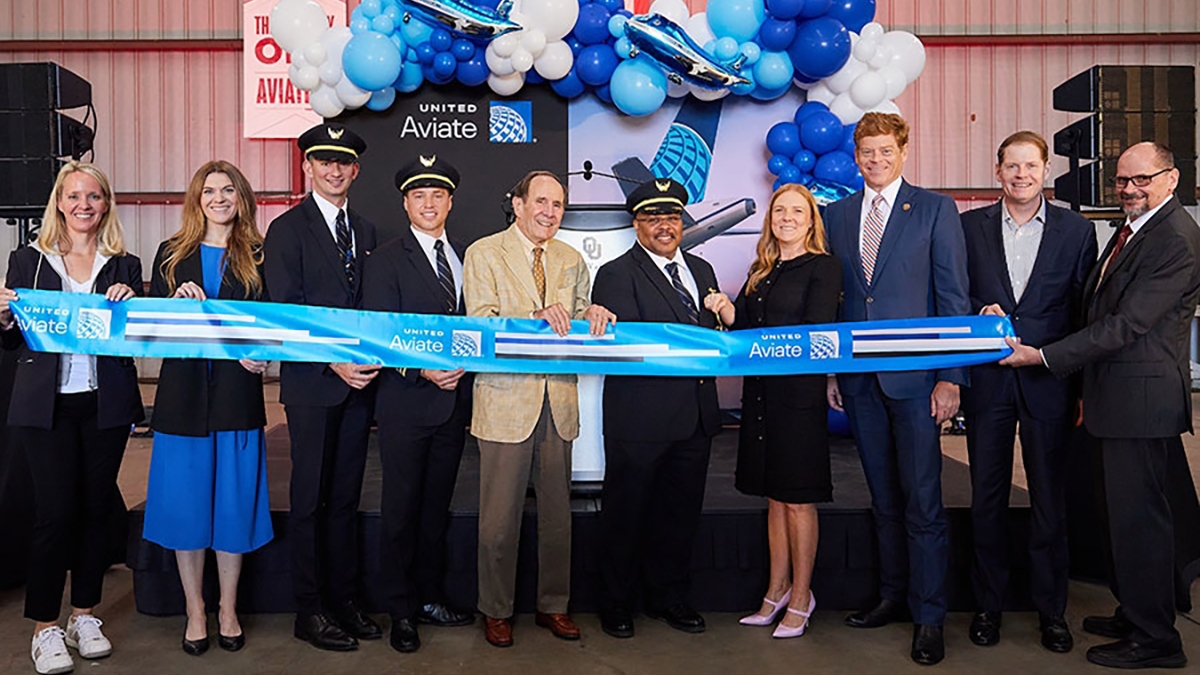
Developing Tomorrow's Workforce
The University of Oklahoma has a well-established relationship with Tinker Air Force Base, headquarters for the Air Force Material Command’s Oklahoma City Air Logistics Center, or OC-ALC. This partnership, solidified through a Cooperative Research and Development Agreement, allows engineering students at OU to work on innovative solutions for military aircraft and gives them access to future job opportunities with the military.
The 76th Software Engineering Group is one of five groups within OC-ALC that work together to provide maintenance, sustainment and innovation support for the Air Force by delivering a wide spectrum of software and systems engineering solutions in a dynamic cyber environment.
“At Tinker Air Force Base, we employ around 1,500 computer scientists and software engineers drawn from across this region, and OU is really our primary partner for developing a strong pipeline of engineers to be able to do this portfolio of work,” said Michael Jennings, senior leader for weapon system software sustainment for the Air Force Sustainment Center at OC-ALC.
OU Sooner Advanced Manufacturing Lab, which opened in late 2023, employs tools to assist faculty and students with designing and meeting the most critical requirements of the highly regulated military and aerospace industry. Plans for this lab include expanded research, training and workforce development to support OU’s military and aerospace partners.
Furthermore, OU is working alongside Norman Public School’s Oklahoma Aviation Academy to prepare the next generation of students for the aviation, aerospace and high-tech industries thanks to a $50 million investment at Max Westheimer Airport.
“We have the No. 1 Aviation School, the No. 1 meteorology program in the world. We’re also world-class in severe storm prediction; No. 1 academic program in the world in radar...so when you think about this ecosystem, it’s not just about one component, it’s about being strategic and seeing how you lift the lives of individuals, how you lift the lives of a community, how you lift the national security for a country so you can provide peace and security for the world,” OU President Joseph Harroz said.
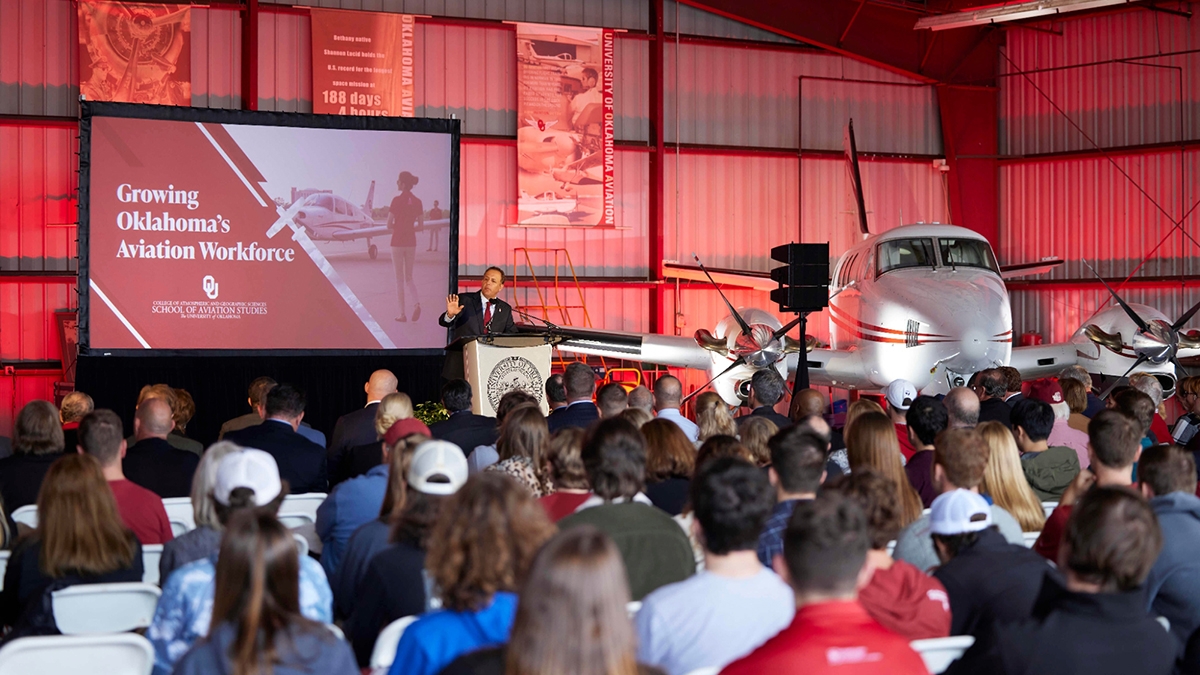
From Taxiway to Takeoff
The University of Oklahoma is not just dreaming of the future; it's building it. With a commitment to innovation and strategic partnerships with well-established industry and military partners, OU is lifting Oklahoma and the nation into a new era of security, opportunity and advancement.
“Our goal is to not be able to just say that we are the leading university in the country for aerospace, defense and global security, but to be able to prove it in quantitative, clear ways, just like we can today with our radar research,” Harroz said. “We want to show that across our areas of research, if you want to partner with academia and you're in the government or in the private sector, there's one place to be, and that's the University of Oklahoma.”
About the University of Oklahoma
Founded in 1890, the University of Oklahoma is a public research university located in Norman, Oklahoma. As the state’s flagship university, OU serves the educational, cultural, economic and health care needs of the state, region and nation. For more information about the university, visit www.ou.edu.
Three University of Oklahoma graduate students have been named winners of the 2025 Three Minute Thesis competition, which challenges participants to explain their research in three minutes to a non-specialist audience.
Sarah Sharif, a researcher with the University of Oklahoma, has been awarded funding from the U.S. Department of Defense (DoD) to create innovative light detectors that pick up mid-wave and long-wave infrared signals at higher temperatures than previously considered achievable.
A team from OU and WVU recently earned a five-year, $3.5 million grant from the National Institutes of Health to study how concept cigarillos influence the potential for addiction. The results will be used to inform the FDA’s impending flavor ban on cigar products and could have wider-reaching implications for other tobacco products that come in flavors, such as e-cigarettes and tobacco-free nicotine pouches.